"These N-MOSFETs will turn on with just 5v from the Arduino."
Are you sure? Do you expect them to conduct 60A with an Fds of 0.05 Ohm with 5V at the gate? (Just checking your understanding of the datasheet. They will switch on with 5V at the gate, but they will do less well than with the 'normal' gate voltage of 10V.)
But your top mosfets have a problem. To turn them on their gates must be 5 Volt positive with respect to their sources. When conducting, their sources will be at +7.2V (minus a small drop), so their gates must be at ~ 12V.
Their are specialized chips that can do this for you (google "high side mosfet driver"), or you can use P mosfets at the top. But note that for such a P fet to turn off, its gate voltage must be 7.2V (with respect to ground), so you will need a 5v->7V level translation. This can be done by some transistors, or use a dedicatet chip (google mosfet driver).
You say you want to drive the mosfets from an arduino. I hope you are not going to use PWM? An Arduino output is bit to weak to drive a mosfet gate quickly. This is not a big problem if you switch the fet occasionally, but for PWM you'd better use driver chips.
